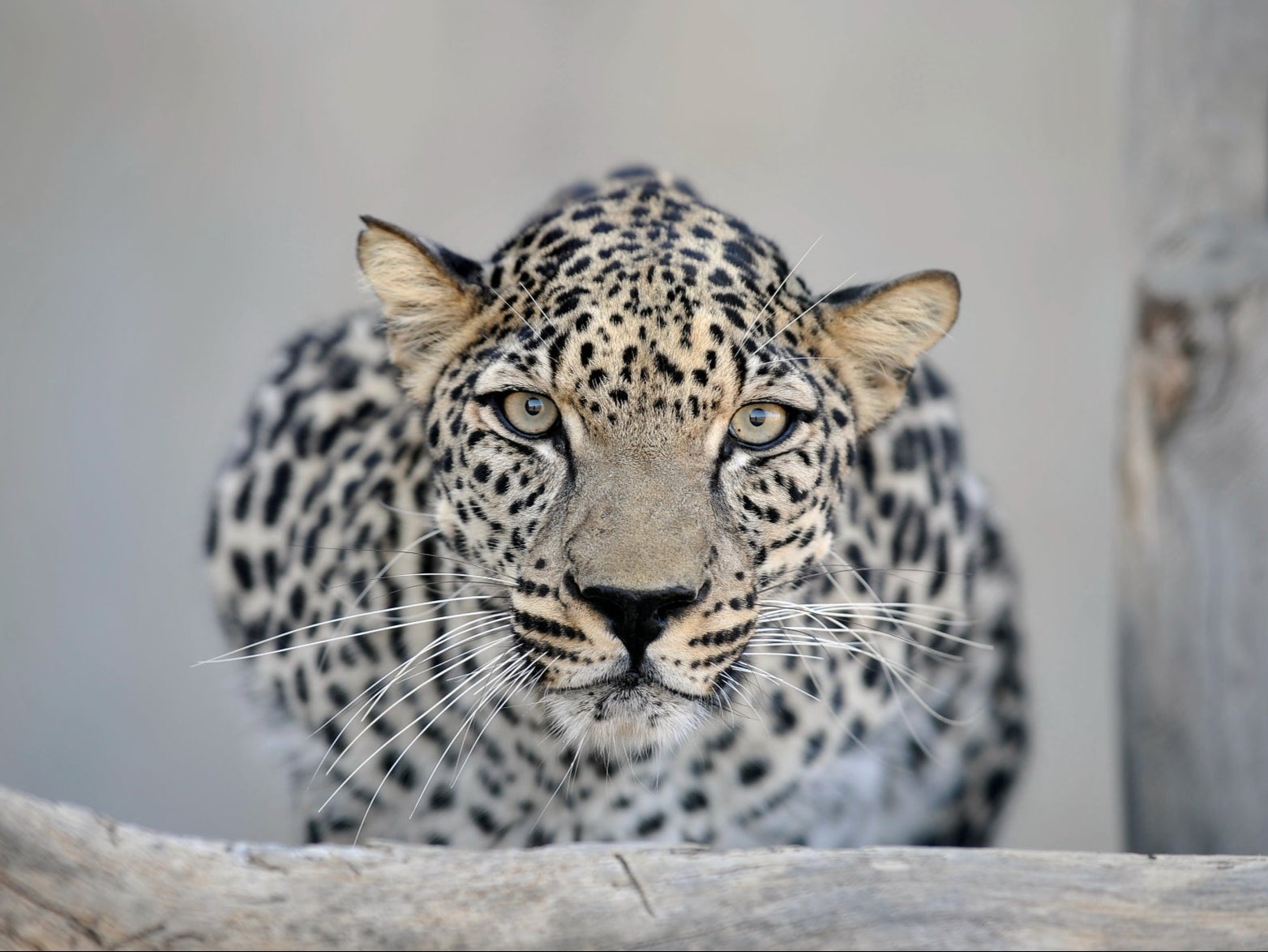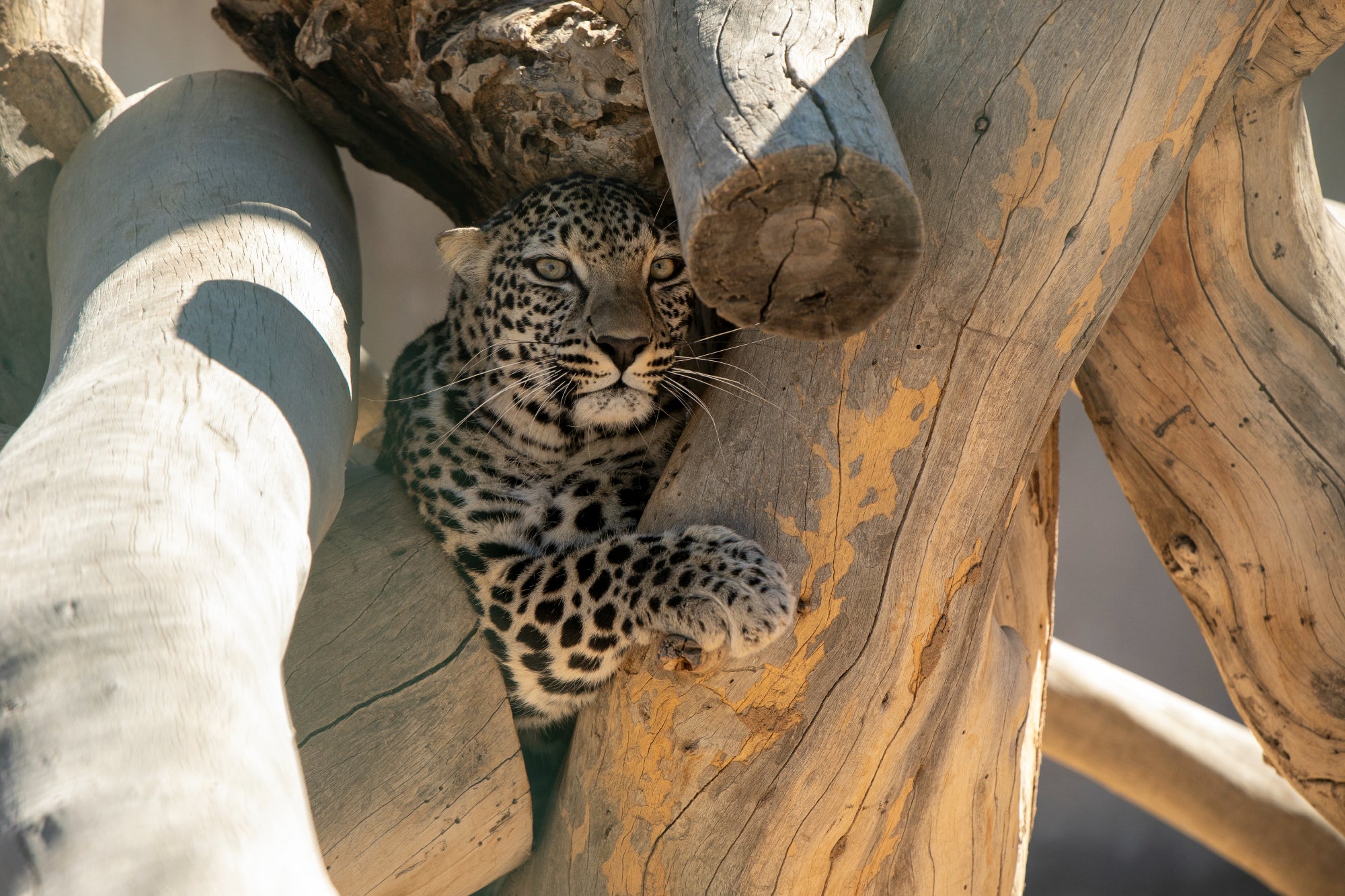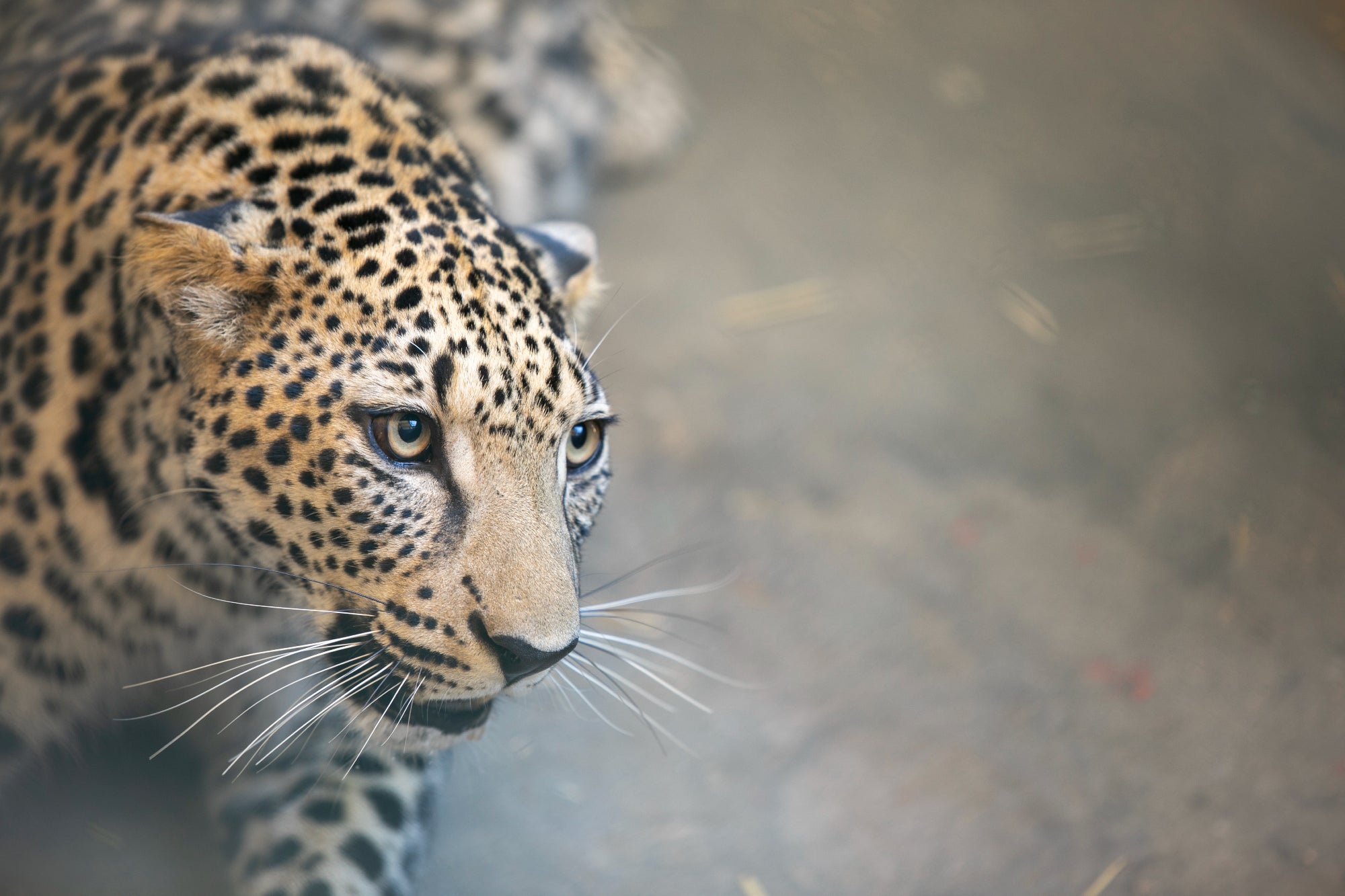Born to be wild: A daring vision of the Arabian leopard’s future
The number of Arabian leopards has long been in decline, and it’s thought there are now less than 200 adults left in the wild. But a new decade-long initiative could start to reverse that

Abdulaziz Alenzy smiled when asked whether it’s possible to distinguish between Arabian leopards and their African or Asian cousins. “I think when you see them, you will definitely know they are different from other leopards,” he said.
It’s fair to say that to Alenzy, even minor differences are obvious. He is, after all, the veterinarian manager for AlUla, a 22,500 square kilometre area (just larger than the whole of Wales) of desert, sandstone mountains and the occasional lush oasis in the north-west of Saudi Arabia that’s leading an ambitious plan to secure the future of these big cats.
They are the smallest of the leopard subspecies. Some reports suggest that the largest males rarely exceed 30kg, perhaps half the weight you’d expect those in Africa or Asia to reach. Their coats are another point of difference. The golden yellow seen in African leopards is replaced by a paler, almost tan-brown colour in the Arabian leopard (though there appears to be considerable variation here, too).
In other words, the Arabian leopard – technically Panthera pardus nimr, one of nine subspecies officially recognised by the world’s wildlife authority, the International Union for Conservation of Nature (IUCN) – is noticeably distinct from the animal most people will be familiar with from zoos or natural history programmes, and this is just one motivation for AlUla’s initiative to try and rescue it from what has been several centuries of precipitous decline.

It includes ambitious plans to rewild 1,500km2 of mountains and desert as part of the Sharaan Nature Reserve in north-west Saudi Arabia, and multiple breeding programmes to provide a stock of animals to reintroduce into the wild.
Certainly, something needs to be done, and fast. The Arabian leopard is regarded as critically endangered by the IUCN. Its population has shrunk by as much as 90 per cent since the beginning of the 19th century, and officially there are less than 200 left in the wild, with the largest single population – around 50 adults – in Oman. Whether there are any left in Saudi Arabia seems open to question.
Surveys carried out in the mid and late 2000s suggest that although these leopards had disappeared from the Medina Mountains in the north of the country, they may still survive “in reasonable numbers though at very low densities” in Hijaz and the Sarawat Mountains further to the south, close to the border with Yemen.

But other research published in 2006 calculated that the leopard’s range had been contracting at a rate of 10 per cent annually for the past 15 years and that extinction was likely. At the Royal Commission for AlUla (RCU), the commission established in 2017 principally to protect and promote the great heritage and archaeological riches of AlUla, the considered opinion is that there are probably fewer than 50 adults remaining, and it is possible that no breeding nucleus persists.
Whatever the truth, it seems clear that Saudi Arabia’s top predator is now the equivalent of a ghost, pushed into the remotest mountainous areas, so that it almost never crosses paths with any humans. Even if some individuals do still exist, the population is slowly disappearing down a cul de sac.
The Saudi Green Initiative is Saudi Arabia’s whole-of-government approach to combat climate change.
“It is now very rare to see a leopard in the wild,” according to RCU’s nature reserves director Ahmed Almalki. “The last time one was seen was in 2014, when it was accidentally poisoned. The herdsmen put out some poisoned bait, and were surprised when an Arabian leopard turned up.”
It isn’t hard to establish why the Arabian leopard is in such dire straits. Habitat degradation leading to the loss of gazelles and ibex, its favoured prey, began as early as the 16th century, with tree-felling to fuel the growing iron and copper industries, but the expansion of livestock herding, which brings the leopards into conflict with people, has had the most significant impact.

As with many large carnivores around the world, the presence of domestic animals – and the associated absence of wild prey – led to leopards changing their behaviour and targeting, in this case, goats, sheep and young camels. Local pastoralists came to view them as a threat to their way of life and resorted to revenge killings. In Saudi Arabia, poison-laced bait was once the favoured method of persecution. Rock traps were also commonly used, but were replaced by metal cages baited with goat meat.
Add in hunting of the prey species, leading to further declines, sport hunting of the leopards themselves, and some evidence of trade in both leopard body parts and live animals in the 1980s, 1990s and early 2000s, and – despite the huge, open spaces that are their natural habitat – it leaves these big cats little room for manoeuvre.
The Arabian leopard probably isn’t the world’s rarest big cat, but it is one of a number that are so threatened they now require highly targeted interventions to stop them from becoming extinct. Its plight has prompted the RCU to form the Arabian Leopard Fund in 2019, an independent organisation that will sponsor conservation initiatives across the region to secure the future of the species.
In the same year, the RCU also agreed a unique partnership with the US-based big cat conservation organisation Panthera, which will help the RCU to revise its strategy to protect the species through the National Action Plan for the Conservation of Arabian Leopards. As part of the partnership, the RCU has also pledged to invest $20m in leopard conservation efforts over a 10-year period as part of Panthera’s Global Alliance for Wild Cats. The first initiative under this is the extensive surveys of leopard populations across the whole of Saudi Arabia. Ten sites have been surveyed so far, with over 550,000 images captured by the 30 to 80 high-tech camera traps placed at each site.
Habitat restoration is also needed and that starts with excluding livestock, including goats, sheep and camels, from protected areas such as the Sharaan Nature Reserve. This has been achieved by putting up a perimeter fence, removing at a stroke the grazing pressure. It will allow for the recovery of several native plant species, including a low-growing, almost leafless desert shrub known as remith (Haloxylon salicornicum) that’s used for everything from animal feed to fuel wood; a larger desert shrub called ratm (Retama raetam), which can grow up to three metres high and six metres across and is sometimes used as an ornamental plant; and an aromatic herb, Pulicaria incisa, which is widely used as a traditional medicine. Native acacia trees have also been planted.
With the vegetation starting to recover, the RCU has reintroduced idmi and rheem gazelles, Nubian ibex, Arabian oryx and red-necked ostriches into Sharaan in phased releases in 2019 and 2020, and they are already beginning to breed. Their presence will benefit predators such as the Arabian wolf and red fox, but numbers will need to be much higher before the RCU can consider reintroducing leopards.
Almalki believes that these conservation measures are also helping to change attitudes among local people. “The situation in Saudi Arabia is changing and now we are starting to notice that environmental violations and rates of hunting and persecution of wildlife are decreasing,” he noted. “This is a very important movement in the right direction.” Last year, Saudi Arabia declared seven new nature reserves, and protected areas now cover 16 per cent of the country in total, he said. Eventually, this will become 30 per cent.
As with any ecosystem, bringing back the top predator – which, on the Arabian Peninsula, means the leopard – has the effect of restoring ecological balance, leading to additional conservation benefits. In its absence, feral animals and baboons have become invasive, leading to further degradation of the environment. “We have baboons roaming all over the place because we don’t have any predators,” Almalki said. “So, if you bring back your top predator, then everything will be resolved. It will take some time, but eventually it will reach the balance we are looking for.”
The Saudi Green Initiative is Saudi Arabia’s whole-of-government approach to combat climate change.
Other initiatives in AlUla include a ranger training programme – 13 people from local communities have been trained so far – to support anti-poaching efforts, carry out scientific monitoring, and help with ongoing efforts to engage and educate local communities. These “will be the launchpad for future and more diverse employment opportunities, continually building capacity and contributing to a thriving economy for AlUla,” the RCU said in official statements. Eventually, it’s hoped that AlUla can become a recognised nature tourism destination.
Saudi Arabia is not well known for its wildlife conservation work, but according to Panthera chairman Thomas Kaplan, it deserves credit. “The Arabian oryx disappeared in the wild in the 1970s, and the United Arab Emirates (UAE) joined with Saudi Arabia in a captive breeding and reintroduction programme, similar to what we hope to accomplish with the Arabian leopard,” he told the BBC World Service in an interview to mark the signing of its agreement with the RCU in 2019. Thanks to this programme, Kaplan added, the oryx was the world’s first species to go from being extinct in the wild to being reclassified as vulnerable on the IUCN Red List. “We hope to replicate that experience,” Kaplan said.

Panthera’s experience of managing carnivore conservation programmes all over the world means it understands what it has to do to restore the fortunes of the Arabian leopard. “Like all big cats, they need wide spaces to roam and they need protein,” Kaplan said. “If you can provide that, you can provide a habitat that is not only good for them, but good for all other species that are encompassed under its umbrella.”
As well as being of critical ecological importance, Arabian leopards have cultural resonance. Saudi Arabia has rock art dating back 7,000 years, with Shuwaymis West being one of the most remarkable locations. Here, you can find depictions of hunting groups targeting wild asses known as onagers and the extinct ancestor of domestic cattle, the auroch. Carved into one rock face, a leopard is shown hunting, recognisable by its long tail, flat facial profile, stalking pose with bent limbs and long claws. It’s said there are more leopards depicted at Shuwaymis West than anywhere else in the country.
The rock art provides an insight into how people viewed the Arabian leopard and the animals it hunted, Almalki explained. “It’s amazing,” he said. “Our ancestors were describing what they were seeing in their life.”

Meanwhile, the captive breeding work is taking place at the Prince Saud Al-Faisal Wildlife Research Centre in the city of Taif, on Saudi Arabia’s western edge. There’s a team of people looking after everything from the leopards’ health to its welfare and diet, but the biggest issue they face is maintaining the genetic diversity of the population. “We will work with other institutions that hold the same species,” Alenzy said, “and we hope we may be able to exchange animals in the future.”
Two years ago, the centre proudly announced the birth of two cubs, with Minister of Culture and RCU Governor His Highness Prince Badr bin Abdullah bin Mohammad bin Farhan Al Saud describing them as representing “a new beacon of hope for the renewal of a subspecies on the brink of extinction”. He added: “It is our duty to protect, conserve and build population numbers to preserve the species from becoming a footnote of history.”
Currently there are 16 animals ranging in age from two years to 15 years. Alenzy said they hope to increase this by 20 to 50 per cent over the next two years with a view to carry out actual reintroductions into the wild “in the near future”.
There’s no set date for the release of the first leopards, but the RCU is working with both Panthera and the IUCN to develop protocols that will dictate how this is done. Reintroducing predators such as big cats into the wild is complex because wildlife managers must assess how many individuals the release area can support and – in some cases – take into account the impact on local people.
Both Alenzy and Almalki describe the idea of bringing back the leopard to Saudi Arabia as a dream. “It is coming true,” Almalki added. “We are making good steps towards it.”
The Saudi Green Initiative is Saudi Arabia’s whole-of-government approach to combat climate change.
[The article was originally published in October 2021]
